Peripheral Vascular Disease Nursing Assessment
Peripheral vascular disease nursing assessment. ASSESSMENT Katie Kotson RN obtains Mr. Effective nursing interventions are determined by the nursing diagnoses and associated etiologies. PVD can be related to an arterial or venous issue.
Nursing assessment and nursing diagnosis in patients with peripheral vascular disease. His wife convinces him to see his primary care provider for increasing leg pain with walking and other exercise. Peripheral vascular assessment includes portions of a skin assessment as well as pulses and other indicators of perfusion.
Duffys history before he sees his physician. Assessment and intervention Peripheral vascular diseases are being seen with increased frequency in the health care setting today. Nursing Study Guide for Peripheral Artery Disease PAD Peripheral arterial disease PAD is a medical condition that involves the narrowing of arteries leading to a reduction in the blood flow to the limbs usually the lower extremities.
As a nursing student or nurse you must be familiar with peripheral vascular disease. A differential assessment is essential to identify the type of PVD and to plan management strategies to prevent further vascular dysfunction. PAD is one of the many circulatory diseases under the umbrella of Peripheral Vascular Disease PVD.
Colour flow ultrasound provides accurate information on. Size of arms. A differential assessment is essential to identify the type of PVD and to plan management strategies to prevent further vascular dysfunction.
Start with upper extremities then move to lowers. Peripheral vascular disease is the impediment of blood flow within the peripheral vascular system due to vessel damage which mainly affects the lower extremities. Color of skin and nail beds.
Peripheral Vascular Diseases charac. The peripheral vascular PVS examination is performed to elicit signs of peripheral vascular pathology such as examining the blood vessels in the extremities.
ASSESSMENT Katie Kotson RN obtains Mr.
Duffys history before he sees his physician. Size of arms. During this test the vascular angle also known as the Buergers angle examines to what degree the leg has to be raised from a dependent position before it becomes pale. This review will give you an easy to remember mnemonic to help you remember the difference between arterial and venous disease nursing interventions and treatment. Colour flow ultrasound provides accurate information on. This article describes assessment of patients with PVD risk factors treatments and patient education. As the nurse proceeds through the process of differentiating among. Peripheral vascular disease is categorized as either venous arterial or mixed. Nursing Study Guide for Peripheral Artery Disease PAD Peripheral arterial disease PAD is a medical condition that involves the narrowing of arteries leading to a reduction in the blood flow to the limbs usually the lower extremities.
Effective nursing interventions are determined by the nursing diagnoses and associated etiologies. This review will give you an easy to remember mnemonic to help you remember the difference between arterial and venous disease nursing interventions and treatment. Nursing Study Guide for Peripheral Artery Disease PAD Peripheral arterial disease PAD is a medical condition that involves the narrowing of arteries leading to a reduction in the blood flow to the limbs usually the lower extremities. Peripheral vascular disease is the impediment of blood flow within the peripheral vascular system due to vessel damage which mainly affects the lower extremities. Peripheral Vascular Diseases charac. As a nursing student or nurse you must be familiar with peripheral vascular disease. The diagnoses are derived from a complete data base that results from a thorough assessment.
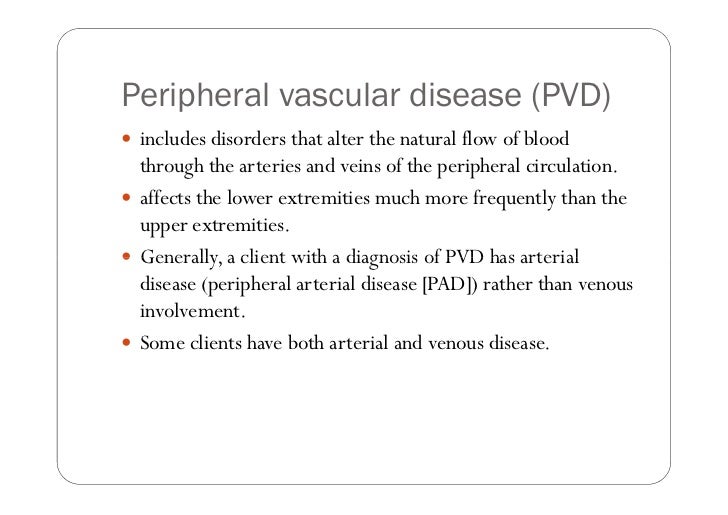

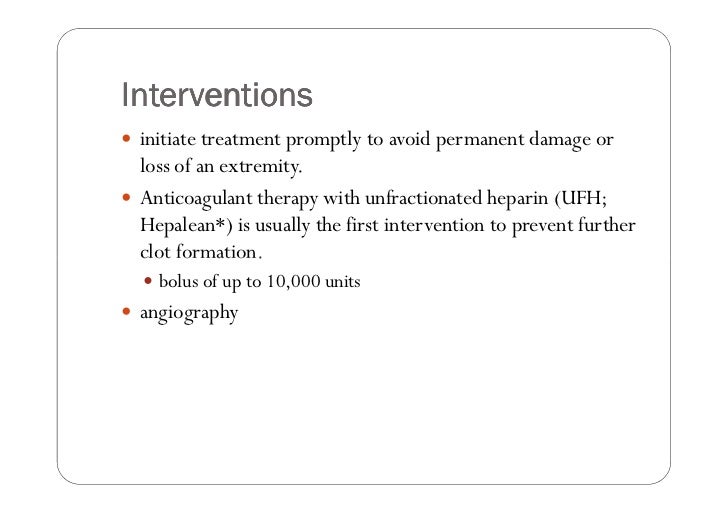



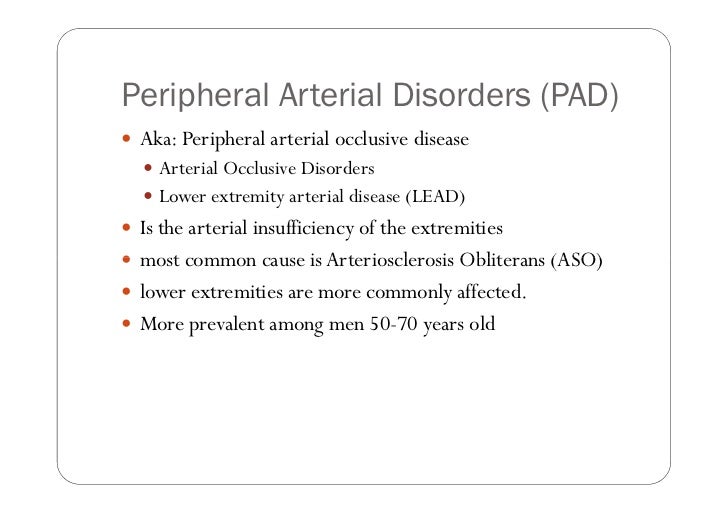






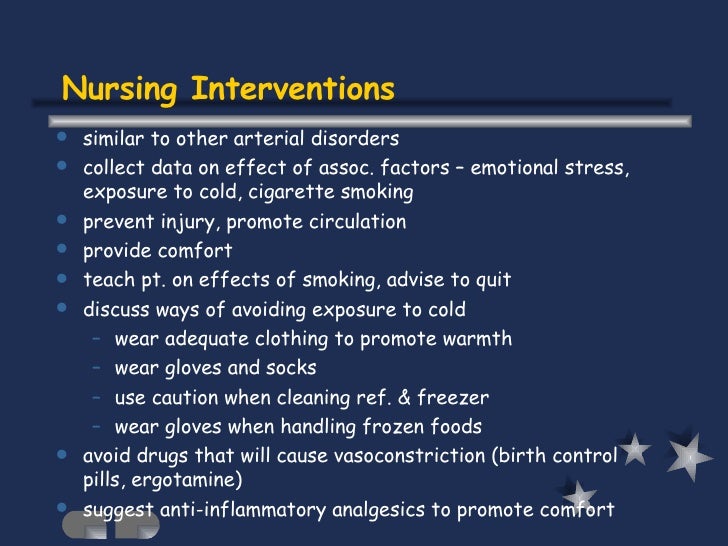







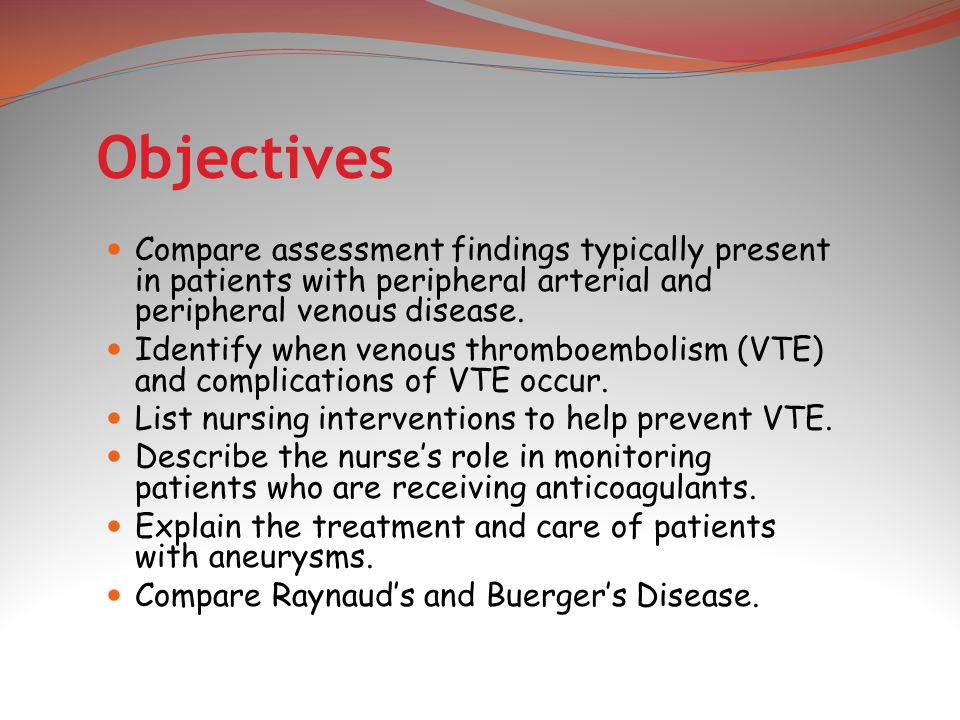
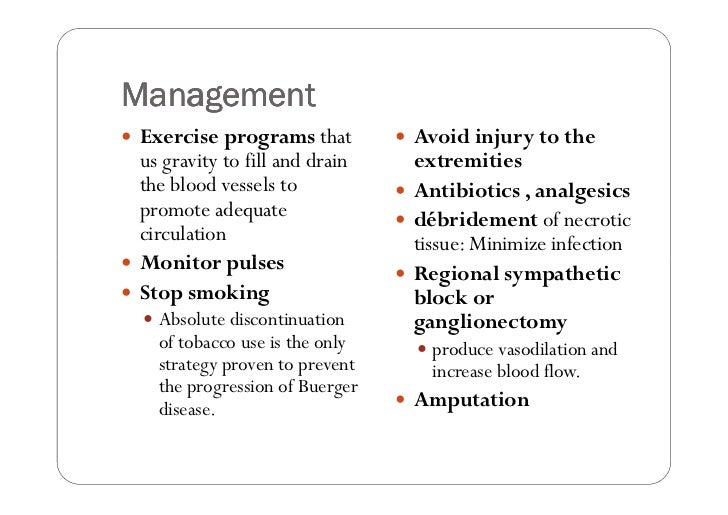


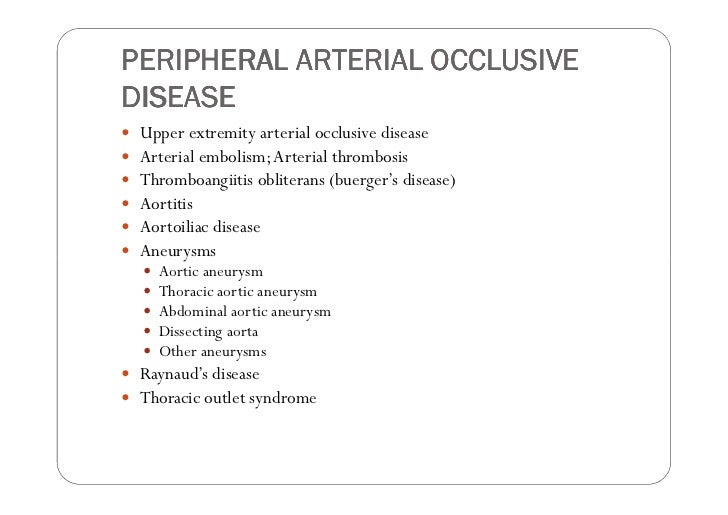

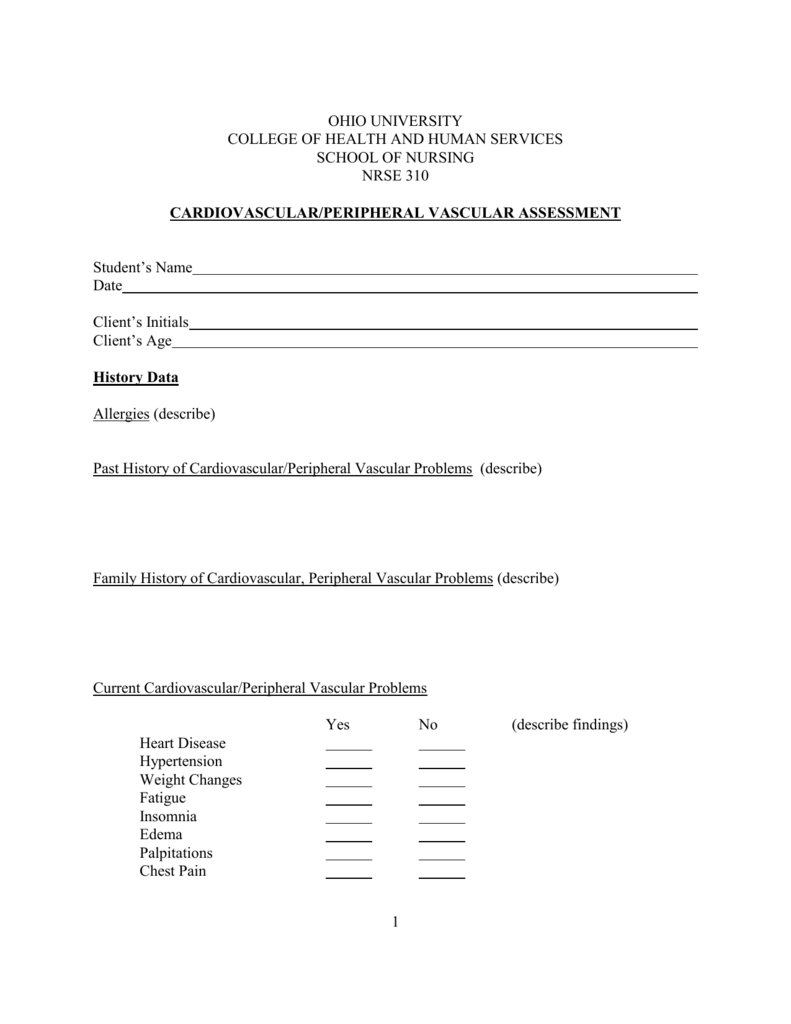
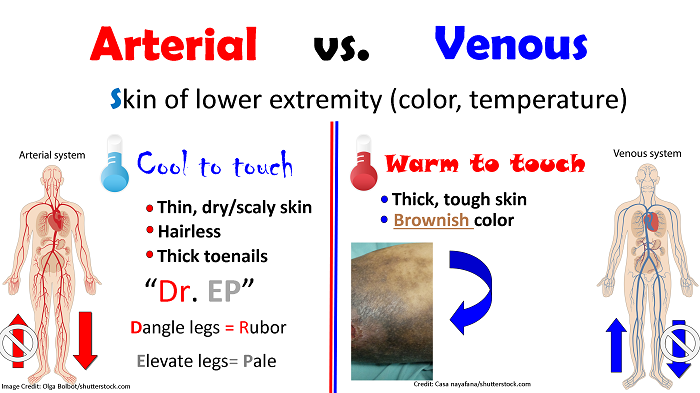



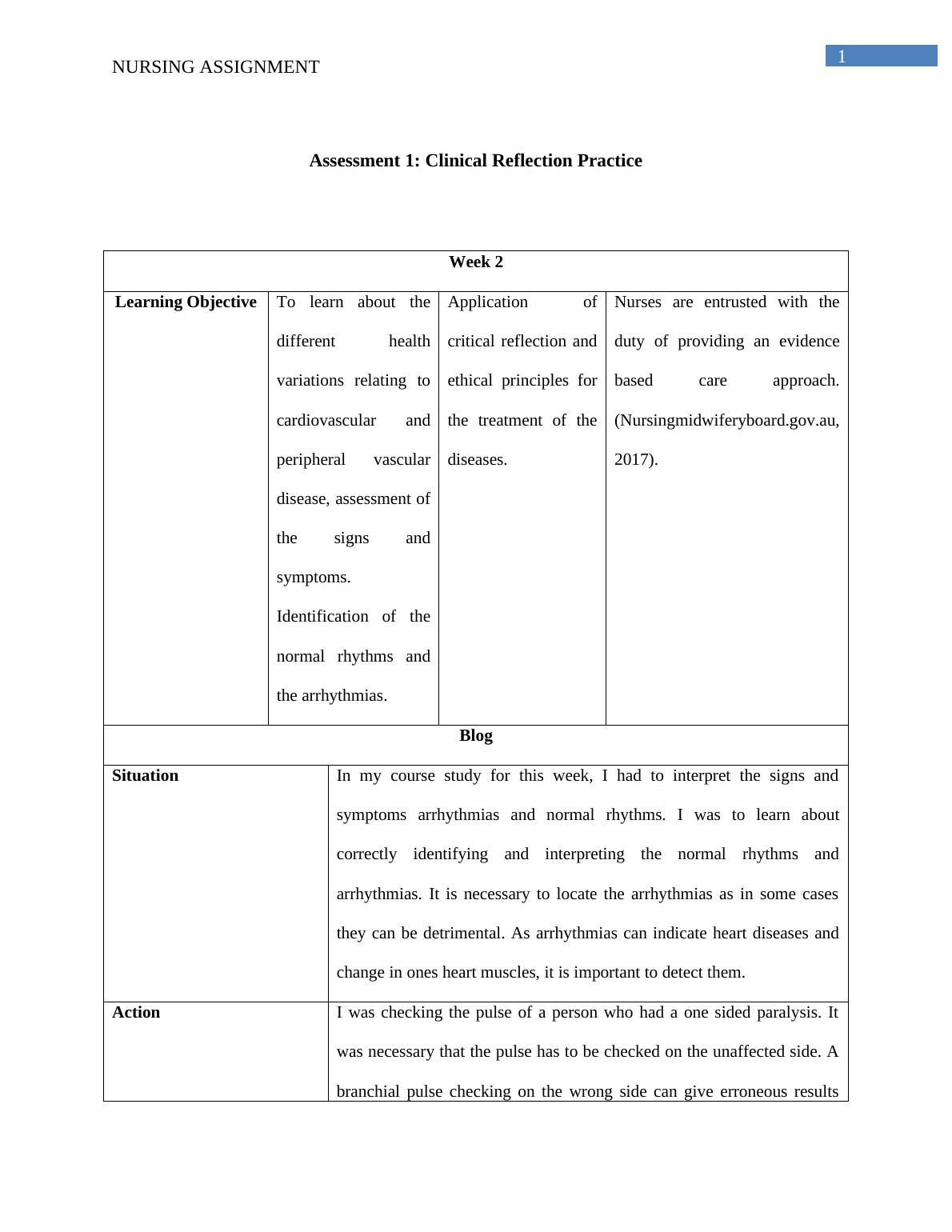



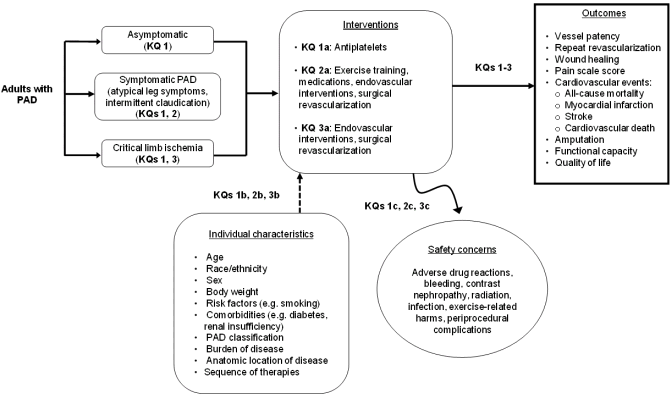

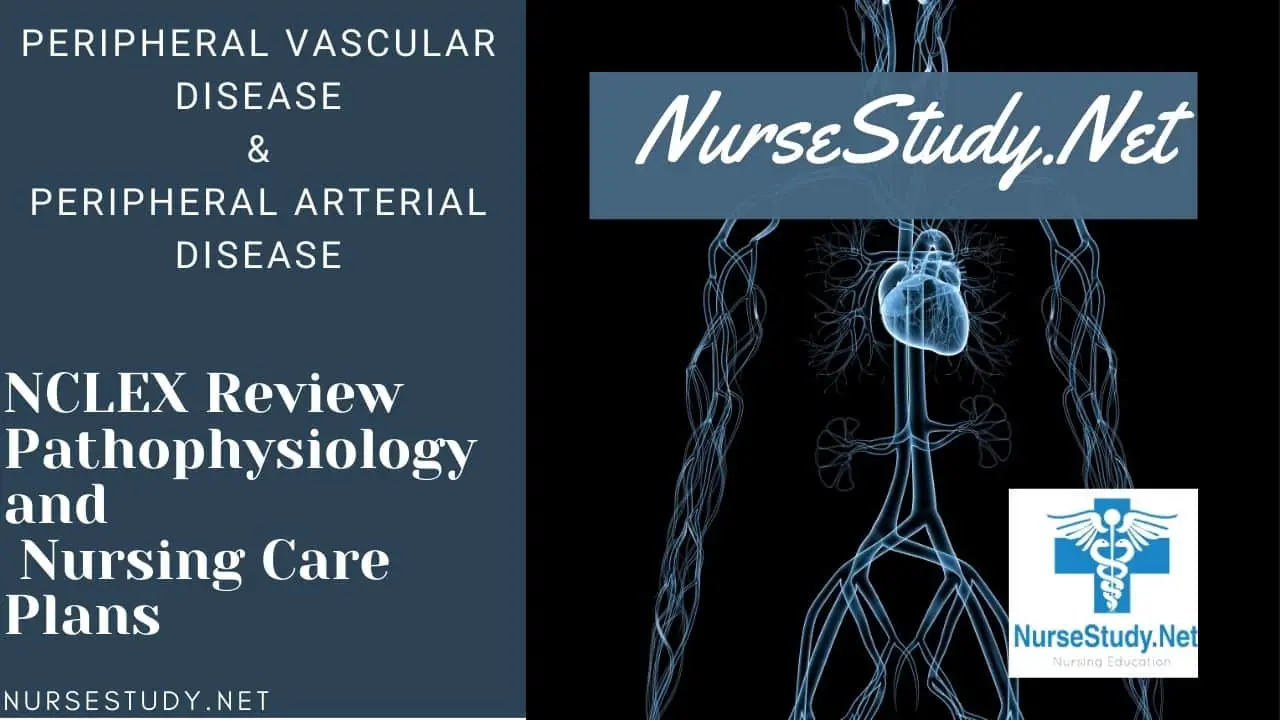
(153).jpg)

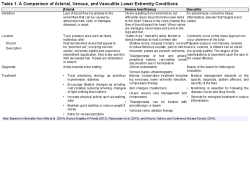

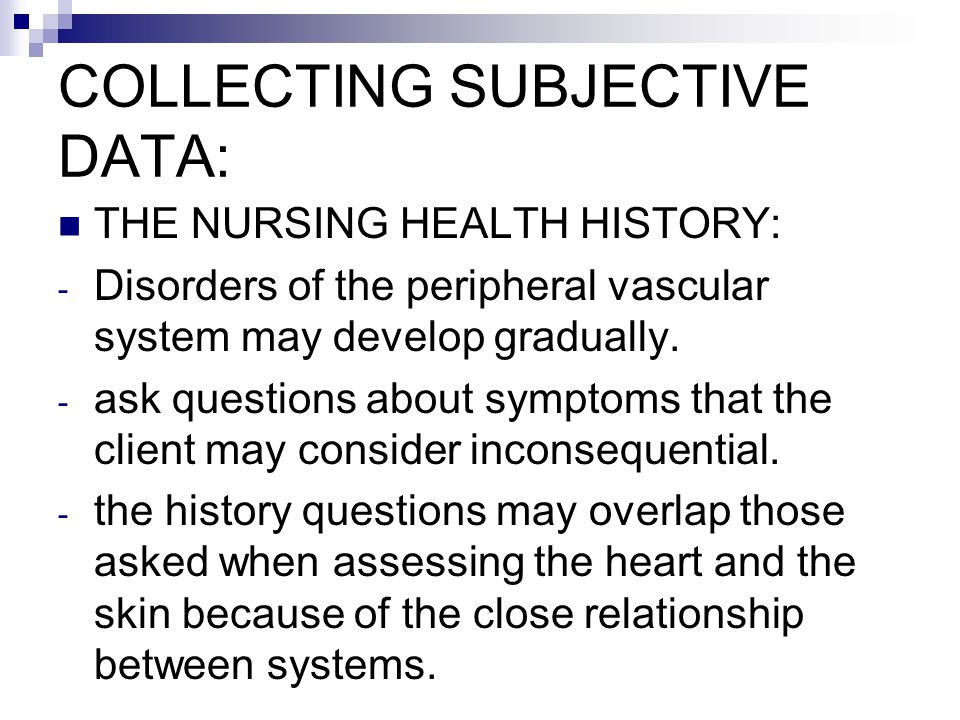
Post a Comment for "Peripheral Vascular Disease Nursing Assessment"